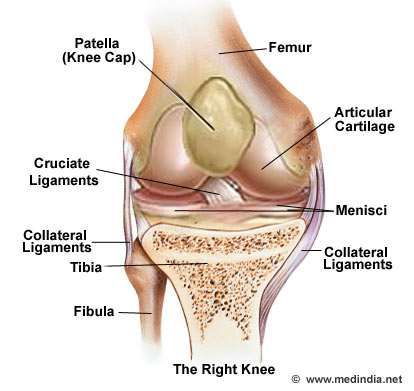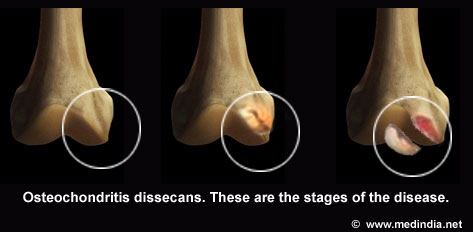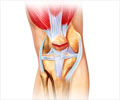- Mercier LR. Osteochondritis dissecans. In: Ferri FF. Ferri''s Clinical Advisor 2010. Philadelphia, Pa.: Mosby Elsevier; 2009.
- Miller RH, et al. Osteochondritis dissecans. In: Canale ST, et al. Campbell''s Operative Orthopaedics. 11th ed. Philadelphia, Pa.: Mosby Elsevier; 2007.
- Osteochondritis dissecans. American Academy of Family Physicians.
About
Osteochondritis dissecans is a joint condition characterised by reduced blood supply to the end of a bone leading to the development of cracks. A piece of cartilage breaks apart along with a thin layer of underlying thin layer of bone. The disease most commonly occurs in young men, usually after an injury to a joint. Though any joints may get affected by

If the broken fragment does not get jammed between the moving parts of a joint, there may not be any symptoms at all. Surgical repair is required otherwise. Loosened fragments are sometimes referred to as joint mice.
The condition is relatively rare; an estimated incidence is about 15 to 30 cases per 100,000 persons per year. However, it is an important cause of

Causes
The exact cause of osteochondritis dissecans is often unknown. Mild recurrent injuries, growth disturbances are some of the theories. Though the name “osteochondritis” means inflammation, microscopic studies suggest otherwise. Suggested
- Repetitive trauma
- Restriction or loss of blood flow
- Hereditary factors
- Endocrine factors
- Anomalies in bone growth
- Metabolic abnormalities (especially imbalances in calcium and phosphorous levels)
- Undernourishment
Repeated trauma (multiple events of minor injuries, often unrecognised) may damage the end of the affected bone compromising its blood supply.
Risk Factors
Sports:
Repeated physical trauma is thought to be a strong risk factor for the development of osteochondritis dissecans. Young athletes exposed to repeated strain injuries are reported to have a higher incidence. Sports like Gymnastics, soccer, basketball, lacrosse, football, tennis, squash, baseball and weight lifting may put participants at higher risk of developing the condition.
Age: People between the ages of 10 and 20 are most commonly affected by osteochondritis dissecans
Sex: Male sex is twice or thrice more likely to develop the condition than female sex.
Certain case reports also suggest genetic predisposition. Some people may have a greater tendency to develop osteochondritis dissecans by virtue of their genetic makeup.
Complications
Joints affected by osteochondritis are more liable to develop osteoarthritis, a condition in which the cartilage wears off (cartilage is a tough elastic tissue).





